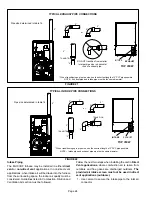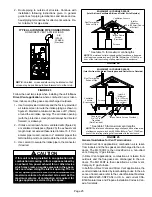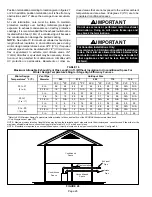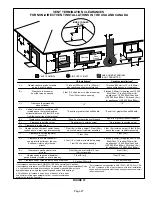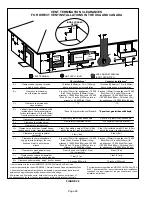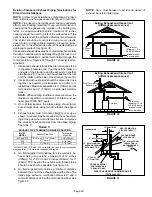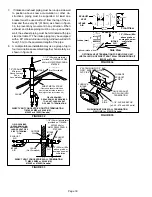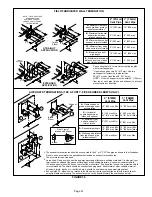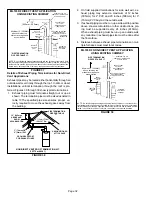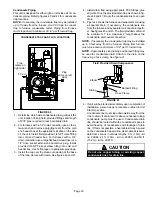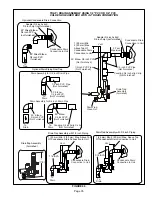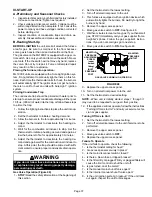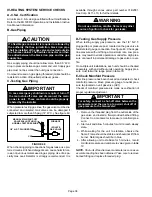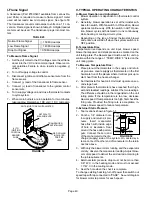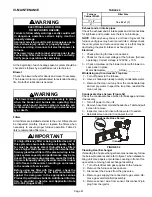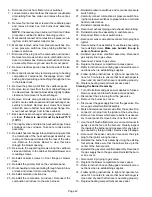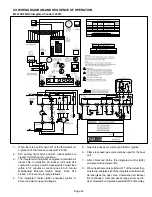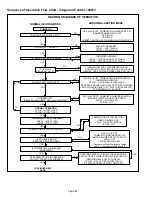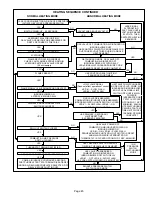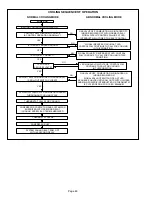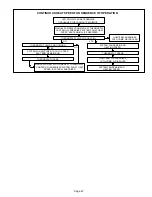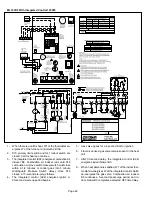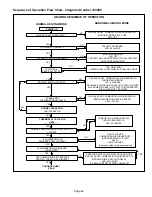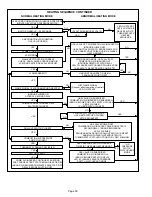
Page 38
IV-HEATING SYSTEM SERVICE CHECKS
A-C.S.A. Certification
All units are C.S.A. design certified without modifications.
Refer to the ML193DF Operation and Installation Instruc
tion Manual Information.
B-Gas Piping
CAUTION
If a flexible gas connector is required or allowed by
the authority that has jurisdiction, black iron pipe
shall be installed at the gas valve and extend outside
the furnace cabinet. The flexible connector can then
be added between the black iron pipe and the gas
supply line.
Gas supply piping should not allow more than 0.5”W.C.
drop in pressure between gas meter and unit. Supply gas
pipe must not be smaller than unit gas connection.
Compounds used on gas piping threaded joints should be
resistant to action of liquefied petroleum gases.
C-Testing Gas Piping
IMPORTANT
In case emergency shutdown is required, turn off
the main shut‐off valve and disconnect the main
power to unit. These controls should be properly
labeled by the installer.
When pressure testing gas lines, the gas valve must be dis
connected and isolated. Gas valves can be damaged if
subjected to more than 0.5psig (14” W.C.). See figure 49
.
FIGURE 49
MANUAL MAIN SHUT-OFF
VALVE WILL NOT HOLD
NORMAL TEST PRESSURE
CAP
FURNACE
ISOLATE
GAS VALVE
1/8” N.P.T. PLUGGED TAP
When checking piping connections for gas leaks, use pre
ferred means. Kitchen detergents can cause harmful cor
rosion on various metals used in gas piping. Use of a spe
cialty Gas Leak Detector is strongly recommended. It is
available through Lennox under part number 31B2001.
See Corp. 8411-L10, for further details.
WARNING
Do not use matches, candles, flame or any other
source of ignition to check for gas leaks.
D-Testing Gas Supply Pressure
When testing supply gas pressure, use the 1/8” N.P.T.
plugged tap or pressure post located on the gas valve to
facilitate test gauge connection. See figure 48. Check gas
line pressure with unit firing at maximum rate. Low pres
sure may result in erratic operation or underfire. High pres
sure can result in permanent damage to gas valve or over
fire.
On multiple unit installations, each unit should be checked
separately, with and without units operating. Supply pres
sure must fall within range listed in table 19.
E-Check Manifold Pressure
After line pressure has been checked and adjusted, check
manifold pressure. Move pressure gauge to outlet pres
sure tap located on unit gas valve (GV1).
Checks of manifold pressure are made as verification of
proper regulator adjustment.
IMPORTANT
For safety, connect a shut‐off valve between the
manometer and the gas tap to permit shut off of
gas pressure to the manometer.
1 - Remove the threaded plug from the outlet side of the
gas valve and install a field-provided barbed fitting.
Connect to a manometer to measure manifold pres
sure.
2 - Start unit and allow 5 minutes for unit to reach steady
state.
3 - While waiting for the unit to stabilize, observe the
flame. Flame should be stable and should not lift from
burner. Natural gas should burn blue.
4 - After allowing unit to stabilize for 5 minutes, record
manifold pressure and compare to value given in table
19.
NOTE
- Shut unit off and remove manometer as soon as an
accurate reading has been obtained. Take care to remove
barbed fitting and replace threaded plug.

